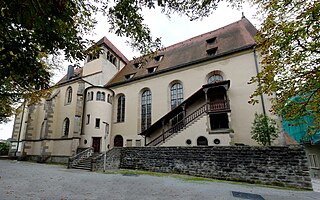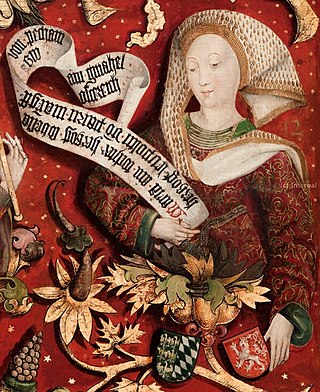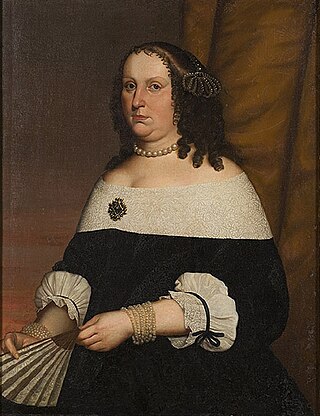Related Research Articles
Judith of Poland was a member of the House of Piast and by marriage margravine of Brandenburg.

Hermann II of Baden was the first to use the title Margrave of Baden, after the family seat at Castle Hohenbaden. This castle is in the present day town of Baden-Baden.
Herman I of Baden was the titular Margrave of Verona and the ancestor of the line of Margraves of Baden.
Hermann III of Baden, nicknamed the Great, was Margrave of Verona and Baden.

Lichtenthal Abbey is a Cistercian nunnery in Lichtenthal in the town of Baden-Baden, Germany.

The Abbey of Saint Pancras of Backnang, better known as Backnang Abbey, was a German monastery of canons regular founded around AD 1100 in Backnang, in the Duchy of Swabia.

Herman V, Margrave of Baden ruled Verona and Baden from 1190 until his death.

Sibylle of Saxe-Lauenburg was Margravine of Baden-Baden. Born a Duchess of Saxe-Lauenburg, she was the wife of Louis William, Margrave of Baden-Baden, a famous Imperial general who was known as the Türkenlouis. She acted as consort of the ruler of Baden-Baden (1690–1707) and then regent of Baden-Baden (1707–1727) for her son Louis George.

Maria of Bohemia, a member of the Přemyslid dynasty, was Margravine of Austria and Duchess of Bavaria by her first marriage to Duke Leopold I, as well as Margravine of Baden and Verona by her second marriage to Margrave Herman III.

Princess Marie Victoire of Arenberg was a member of the House of Arenberg and later the Margravine of Baden-Baden as consort of Augustus George of Baden-Baden. She is credited for her charitable nature setting up various religious orders in her adopted Baden-Baden where she was known as Maria Viktoria.

Countess Palatine Christina Magdalena of Kleeburg of the House of Wittelsbach, Margravine of Baden-Durlach. She was the daughter of John Casimir, Count Palatine of Kleeburg and Princess Catherine of Sweden. Christina Magdalena was a sister of Charles X of Sweden, and grew up in Sweden.
Elizabeth of the Palatinate was a member of the House of Wittelsbach and a Countess Palatine of Simmern and by marriage, successively Landgravine of Hesse-Marburg and Margravine of Baden.
Catherine of Lorraine was Margravine of Baden-Baden by marriage to Margrave Jacob of Baden-Baden.

Hedwig of Brandenburg, also called Hedwig of Ballenstedt, a member of the House of Ascania, was Margravine of Meissen from 1156 until 1190 by her marriage with Margrave Otto II.
Countess Palatine Anna of Veldenz was Margravine of Baden-Durlach by marriage to Charles II, Margrave of Baden-Durlach, and co-regent of the Margraviate of Baden-Durlach during the minority of her son Ernest Frederick from 1577 to 1584.

Catherine of Austria was a member of the House of Habsburg and through marriage Margravine of Baden.
Ursula of Rosenfeld was the second wife of Margrave Ernest of Baden-Durlach. All grand dukes of Baden descend from her, via her son Charles II.
Countess Palatine Irmengard of the Rhine, also known as Irmengard of Baden was Margravine of Baden by her marriage to Herman V, Margrave of Baden-Baden. She brought the city of Pforzheim into the marriage.
Judith of Backnang was a German margravine, as the wife of Herman II, Margrave of Baden. She was a daughter of Hesso II, Lord of Backnang. As a dowry, she brought the important city of Backnang when she married the Margrave in 1111.

Barbara of Württemberg was margravine of the historical German territory of Baden-Durlach. The daughter of Frederick I, Duke of Württemberg and his wife, Sibylla of Anhalt, she was born a Duchess of Württemberg and became margravine after marrying Frederick V, Margrave of Baden-Durlach, in 1616. She is depicted as Saint Barbara in a posthumous miniature portrait.
References
- ↑ "Die Zähringer". www.landeskunde-online.de.
- ↑ "Das Fürstenhaus Baden". www.landeskunde-online.de.